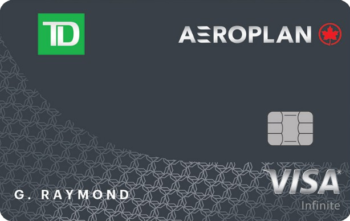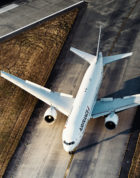It’s widely acknowledged in the aviation industry that premium cabins often generate more revenue than economy cabins. Earlier in 2024, Air Canada reported that its premium products contributed to 30% of passenger revenue growth, and this trend is generally the same across many airlines worldwide.
To capitalize on this, airlines continually invest in their premium offerings, striving to outdo each other through newer seats and better amenities.
With competition being a key factor on why airlines innovate, there are then notable differences between an airline’s business class offering when they’re competing internationally among the world’s best and the offering when they’re competing domestically with a smaller pool of rivals.
Combine these differences in the competition with the fact that domestic flights are usually shorter and cost less than international flights (among a host of other factors), and we can begin to understand why domestic business class is often seen as a “lite” version of international business class.
Given this, as a consumer (and traveller), you’re probably wondering if there’s value in using your miles and points to book business class on domestic flights or if you should just reserve them for international flights.
In this article, let’s break down the differences between domestic and international business class to help answer this question.
In This Post
Business Class: The Basics
Generally, business class around the world means a product, that, simply put, is a cut above the same airline’s economy product.
While benefits vary by airline, as a business class passenger, you’ll generally receive benefits such as priority ground services, meals, alcoholic beverages, baggage allowance, and in most cases, lounge access (all of which we’ll speak to below), while economy passengers typically receive lesser versions of a handful of these offerings, depending on the type of fare purchased.
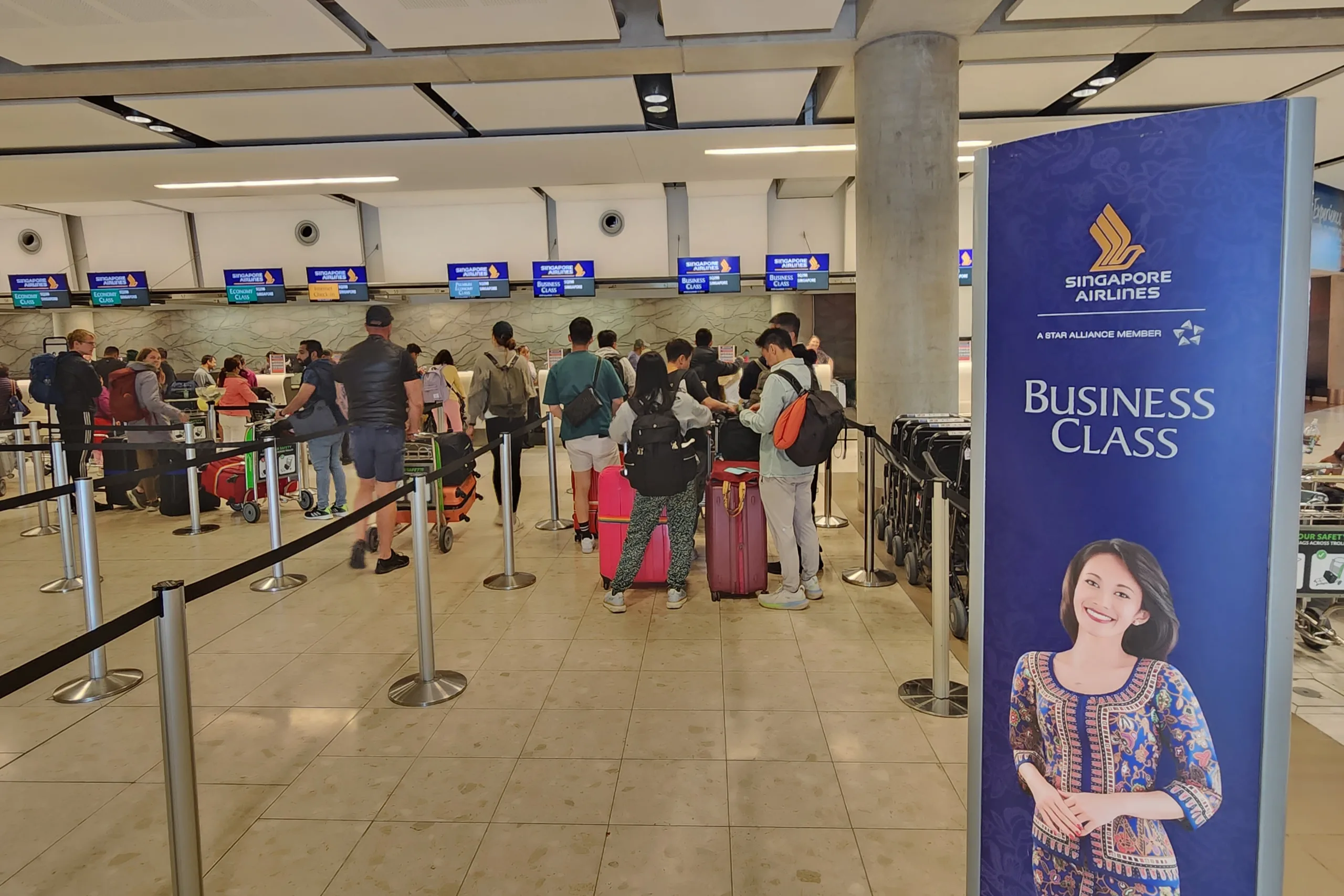
Prices for a seat vary, but whether in cash, miles, or points, business class is usually at least twice the cost of an economy seat.
Now, the perks alone may already convince you to book business class, but for many people, the real determining factor for choosing business class over economy is the seat.
As a general rule, narrowbody aircraft feature recliner seats, which offer greater legroom and a wide angle of recline. However, there are exceptions, such as Aer Lingus, Copa Airlines, and TAP Air Portugal, which have configured their longer-range narrowbody aircraft with lie-flat seats.

Widebody aircraft, meanwhile, usually feature seats that transform into lie-flat or angled-flat beds, and these may be laid out in pods, enclosed suites, or less private configurations.
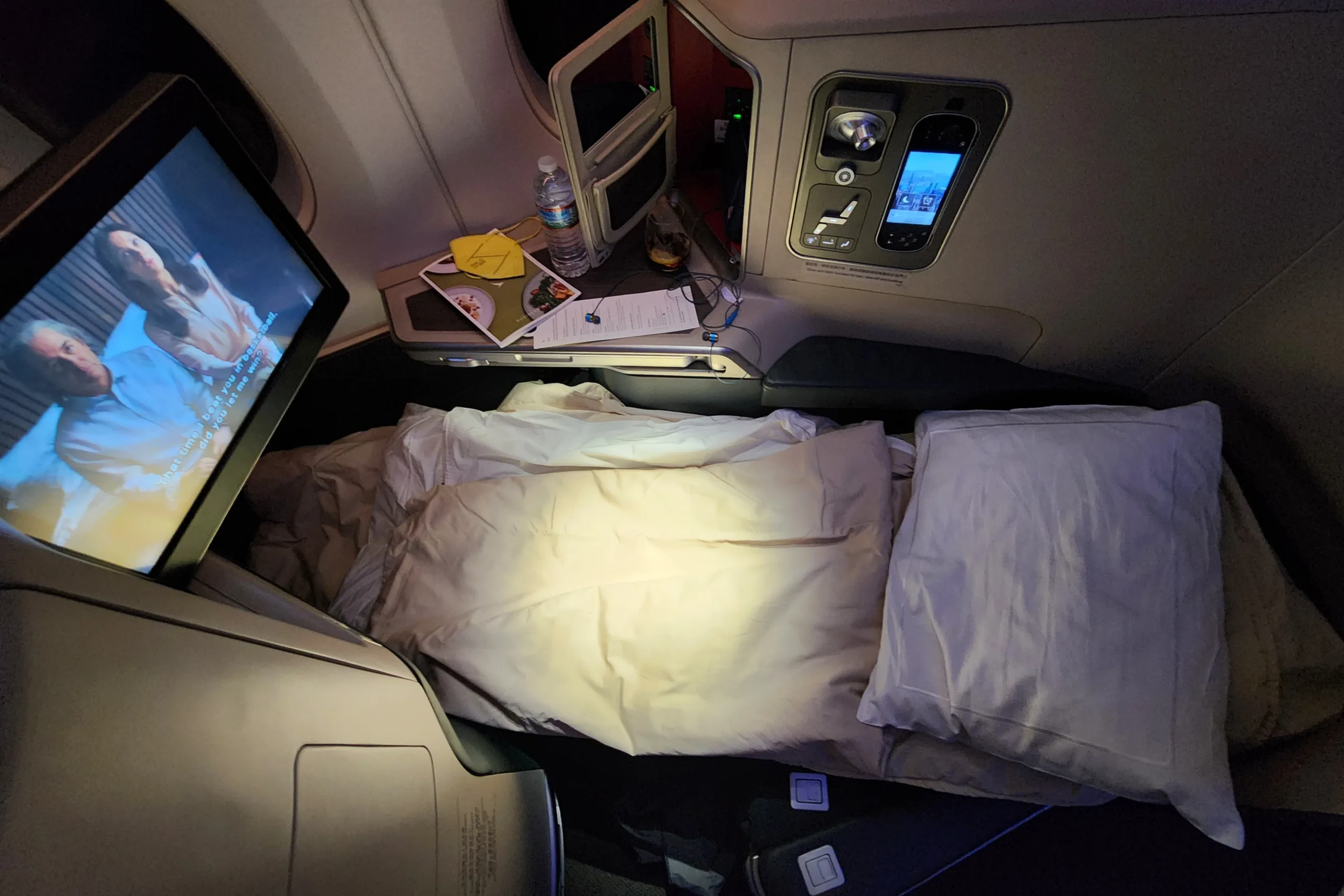
Additionally, some widebody aircraft, usually serving shorter routes, may be equipped with recliner seats, but these days, they’re the exception rather than the rule.
When you’re after a specific seat style or configuration, you’ll want to check which aircraft and seat map is going to be deployed for your flight when booking; though, keep in mind that there can always be last minute aircraft swaps.

If you’re looking for more information to help you choose your seat, you can use AeroLOPA, which keeps detailed and updated seat maps in its database.
Domestic Business Class
In Canada, domestic business class is offered by Air Canada and WestJet.
Air Canada offers business class on all its mainline aircraft and some Express aircraft (specifically CRJ-900 and Embraer 175 jets). Air Canada Rouge aircraft, meanwhile, feature a Premium Rouge cabin, which is sold as business class but comes with a toned down experience.
On its widebody aircraft, Air Canada’s lie-flat seats, ensconced in pods, are marketed as Air Canada Signature Class. These planes are usually utilized for high-demand or “flagship” routes, which include Vancouver–Toronto, Vancouver–Montreal, as well as Toronto–Calgary, Toronto–Montreal, and a handful of other routes.
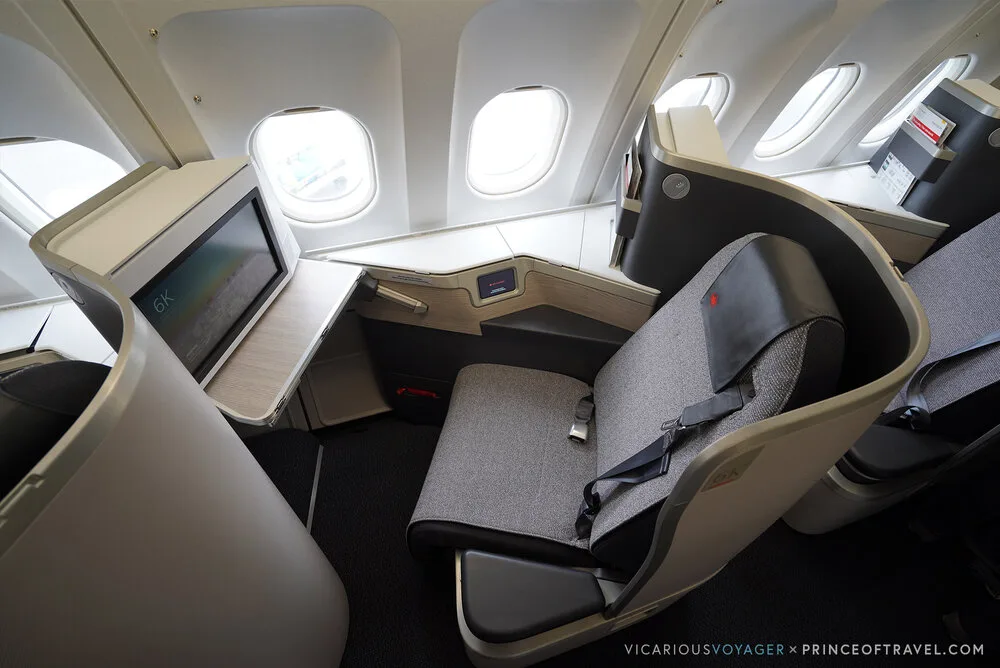
Comparatively, WestJet offers business class only on its widebody Boeing 787 aircraft. On its narrowbody aircraft, it offers its Premium product, which is more similar to a premium economy experience.
WestJet hardly schedules its Boeing 787 aircraft on domestic flights anymore. According to data from aviation analytics firm Cirium, the airline flew this aircraft type on only three domestic flights from January to August 2024.
South of the border, American carriers have marketed their domestic business class as First Class, largely due to tradition.
American carriers mostly offer recliner seats on narrowbody flights and lie-flat beds on widebody flights. One exception is JetBlue, which offers lie-flat seats on select narrowbody planes with its Mint cabin.
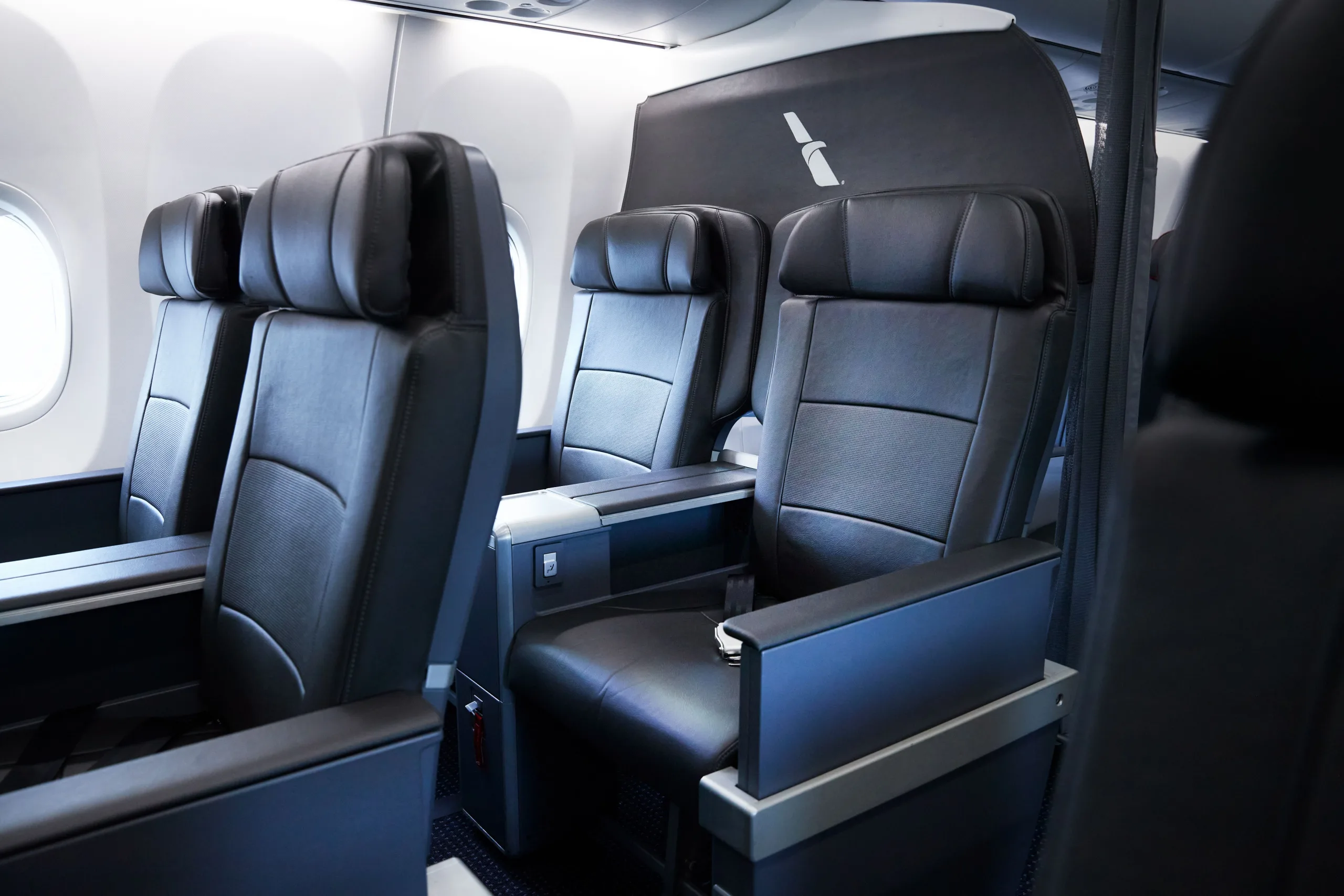
Widebody flights with lie-flat beds are usually reserved for transcontinental flights or “flagship” routes. American Airlines, for example, offers its Flagship First domestic product on coast-to-coast routes, such as New York–Los Angeles and Miami–Los Angeles.
Elsewhere in the world, you’ll find that airlines may or may not offer business class on their domestic flights; though, for the most part, legacy carriers will.
Some airlines don’t offer business class since it doesn’t make sense for the domestic markets they serve, especially if they’re mainly competing with low-cost carriers.
For example, LATAM Airlines only offers premium economy on all its domestic flights across South America, while its competitor Avianca only offers wider “Premium” slimline seats in economy on its domestic flights.
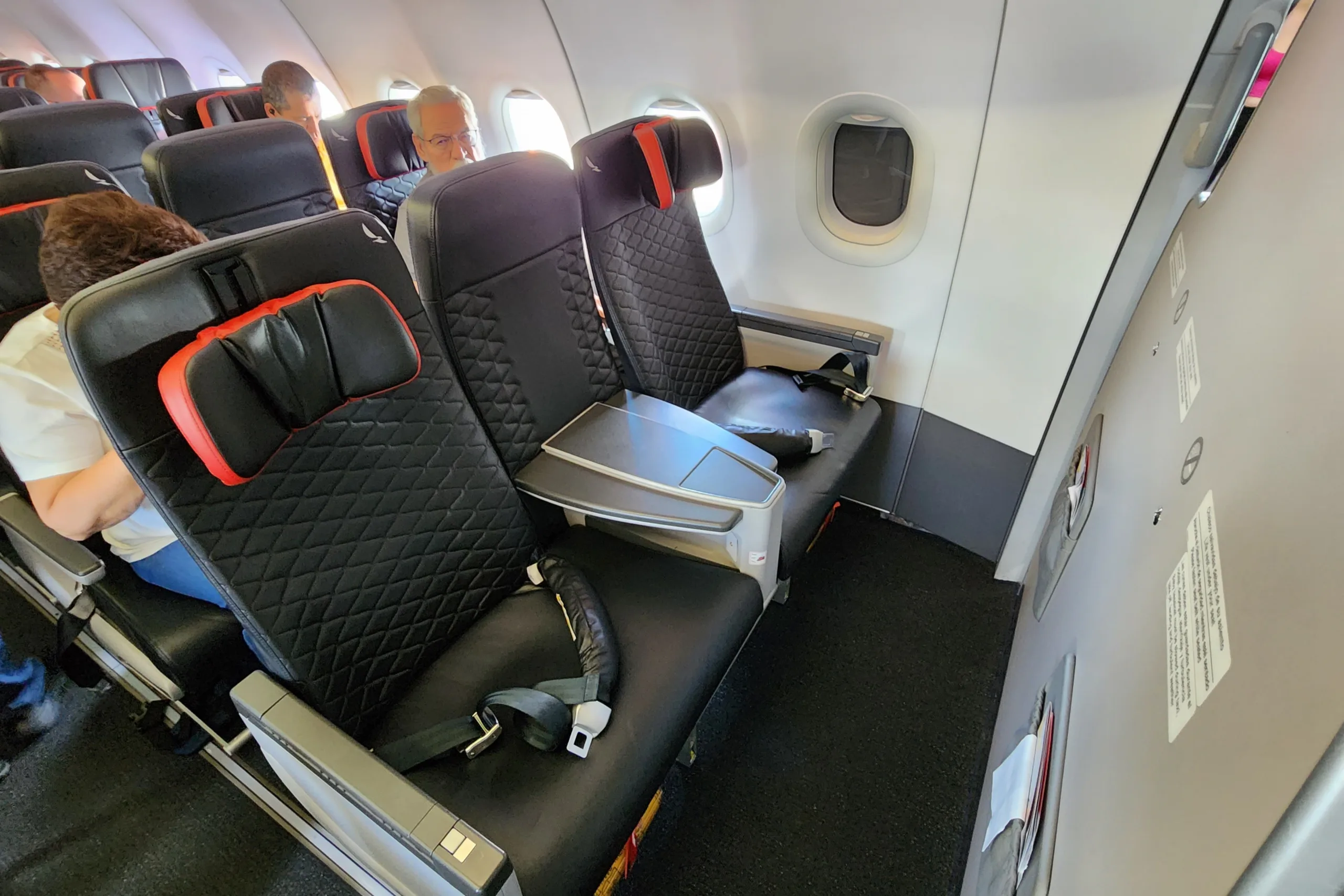
International Business Class
International business class is where airlines tend to expend more of their effort compared to domestic business class. Again, in international markets, airlines are competing with the world’s best, so the standards and expectations are considerably higher.

Air Canada offers its Signature Class cabin with lie-flat seats on most long-haul international flights, including those bound for Europe, Asia, South America, and Oceania.
For shorter international flights like those to Mexico, Air Canada generally deploys narrowbody planes with recliner seats, and similarly, on certain flights to the US, it may deploy Air Canada Rouge aircraft with a Premium Rouge cabin, which again, is a lesser version of its mainline business class counterpart.
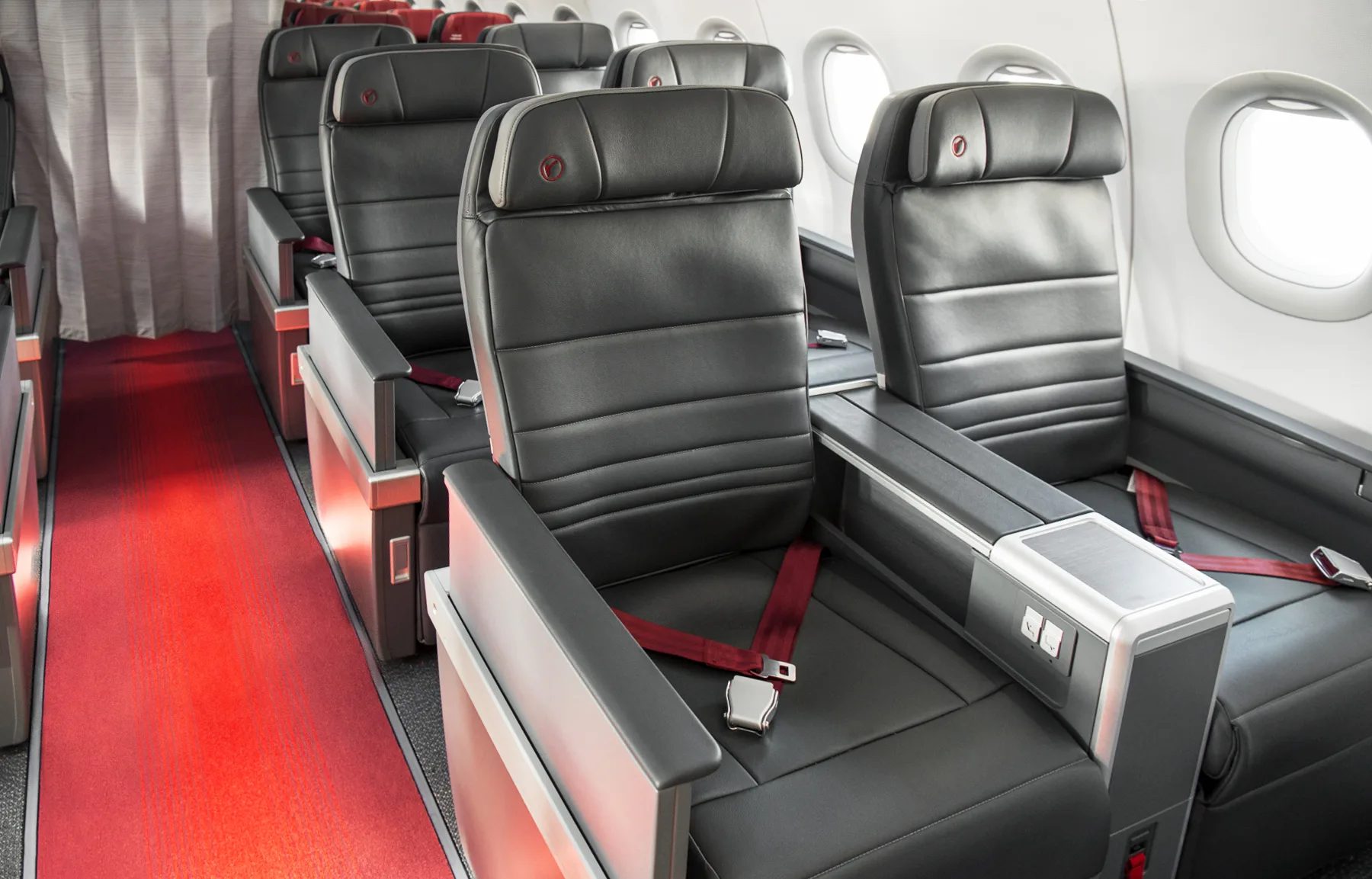
WestJet, meanwhile, deploys its Boeing 787 Dreamliner aircraft with business class featuring lie-flat seats for its long-haul destinations, such as Seoul, Tokyo, Edinburgh, and Barcelona.
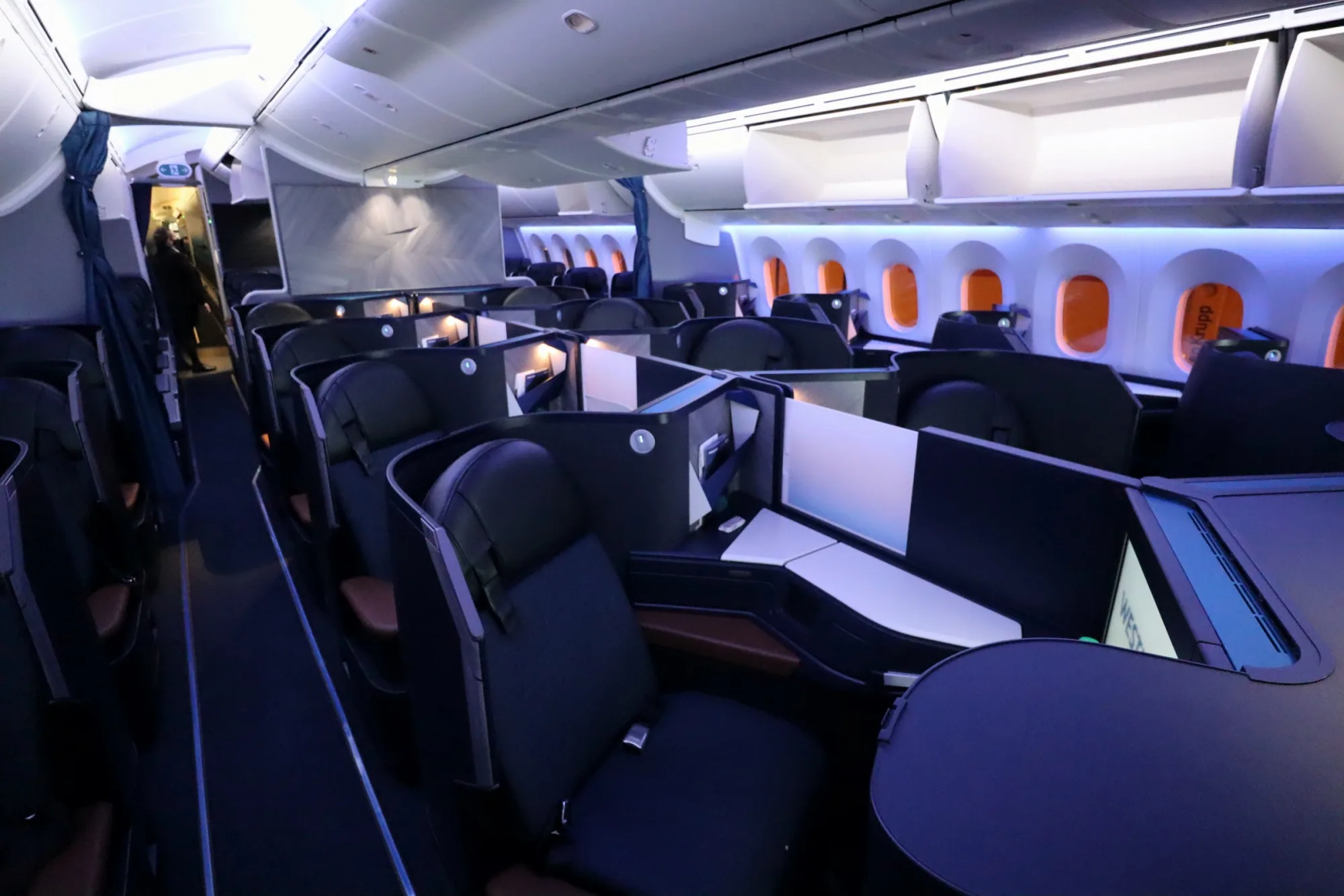
In the US, international business class is marketed as business class, differentiating itself from the domestic “First Class” flights.
Like in Canada, you can generally expect a lie-flat bed on long-haul flights, and recliner seats on short- to medium-haul flights, such as those destined for Central America, when you fly with a US-based carrier.
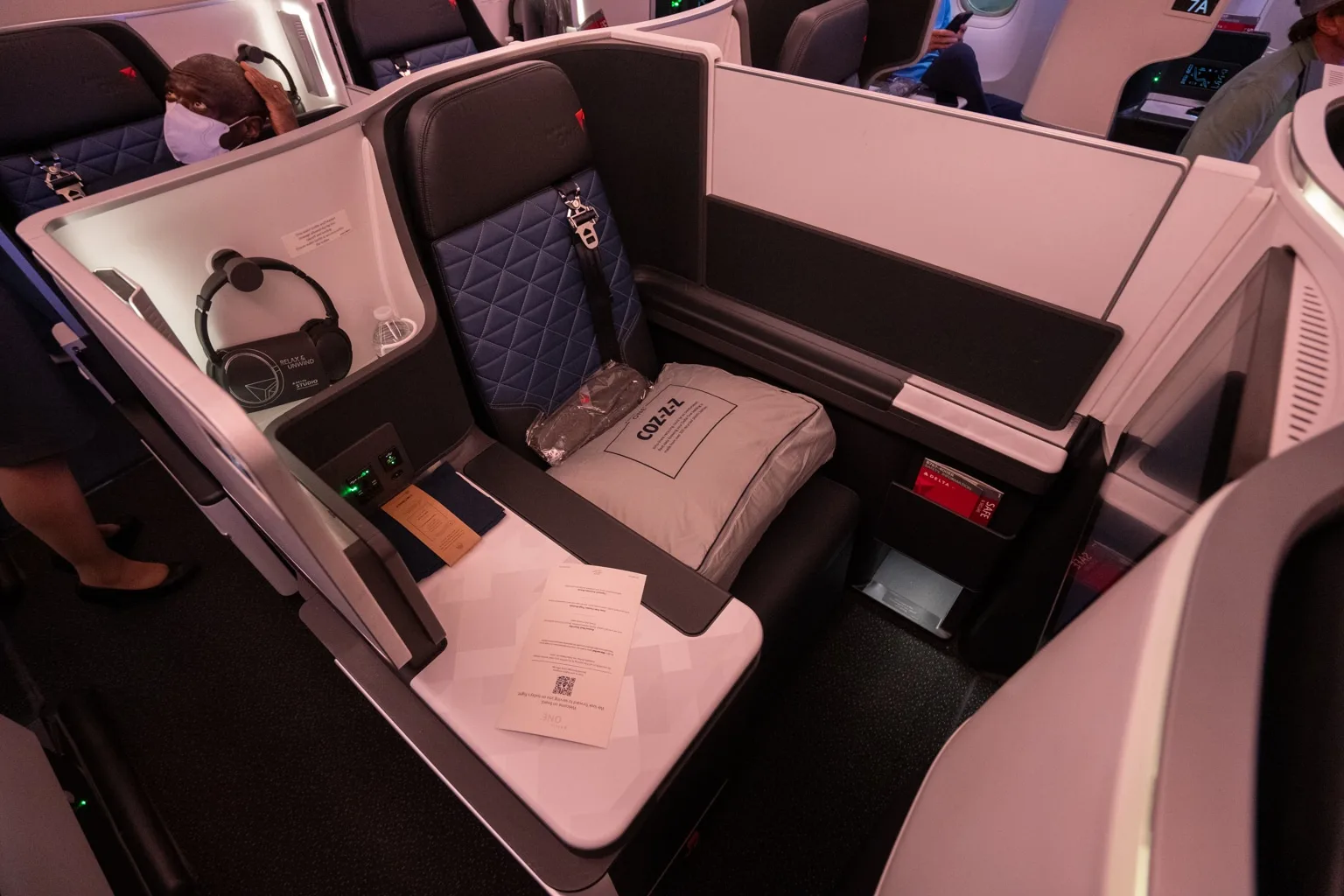
Many airlines around the world follow a similar rule, whereby they’ll schedule their better business class product on their long-haul flights, as well as on their “flagship” routes.
For instance, Singapore Airlines deploys its all-premium Airbus A350 aircraft on specific flights to New York and Los Angeles. The ultra-long-range versions of these A350 aircraft feature only 67 business class seats and 94 premium economy seats, creating a more intimate environment.
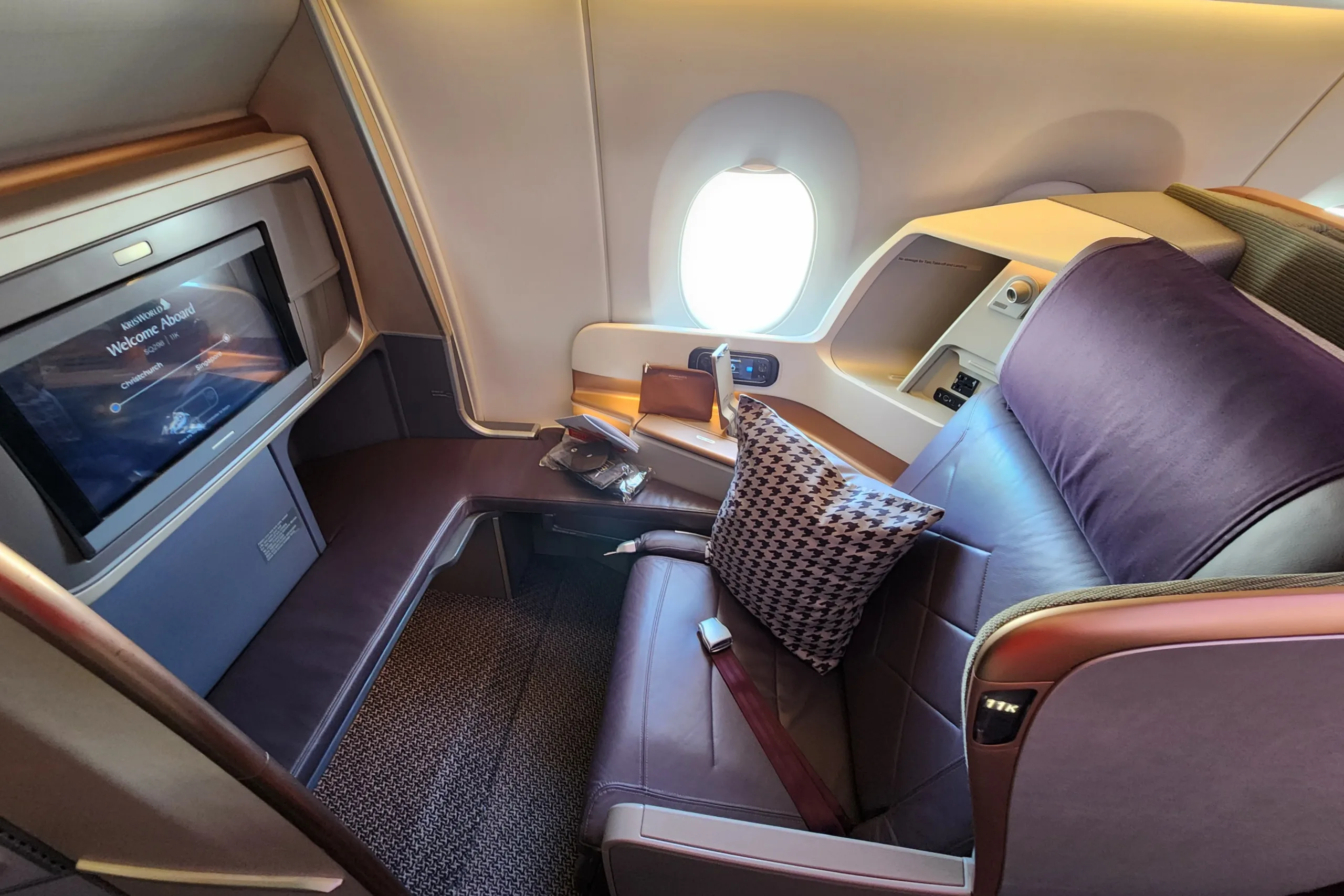
In Europe, most airlines reserve their widebody planes with more desirable business class seats for medium- to long-haul international flights.
Lufthansa has debuted its new Allegris business class product on flights to Vancouver, Chicago, Shanghai, and San Francisco.
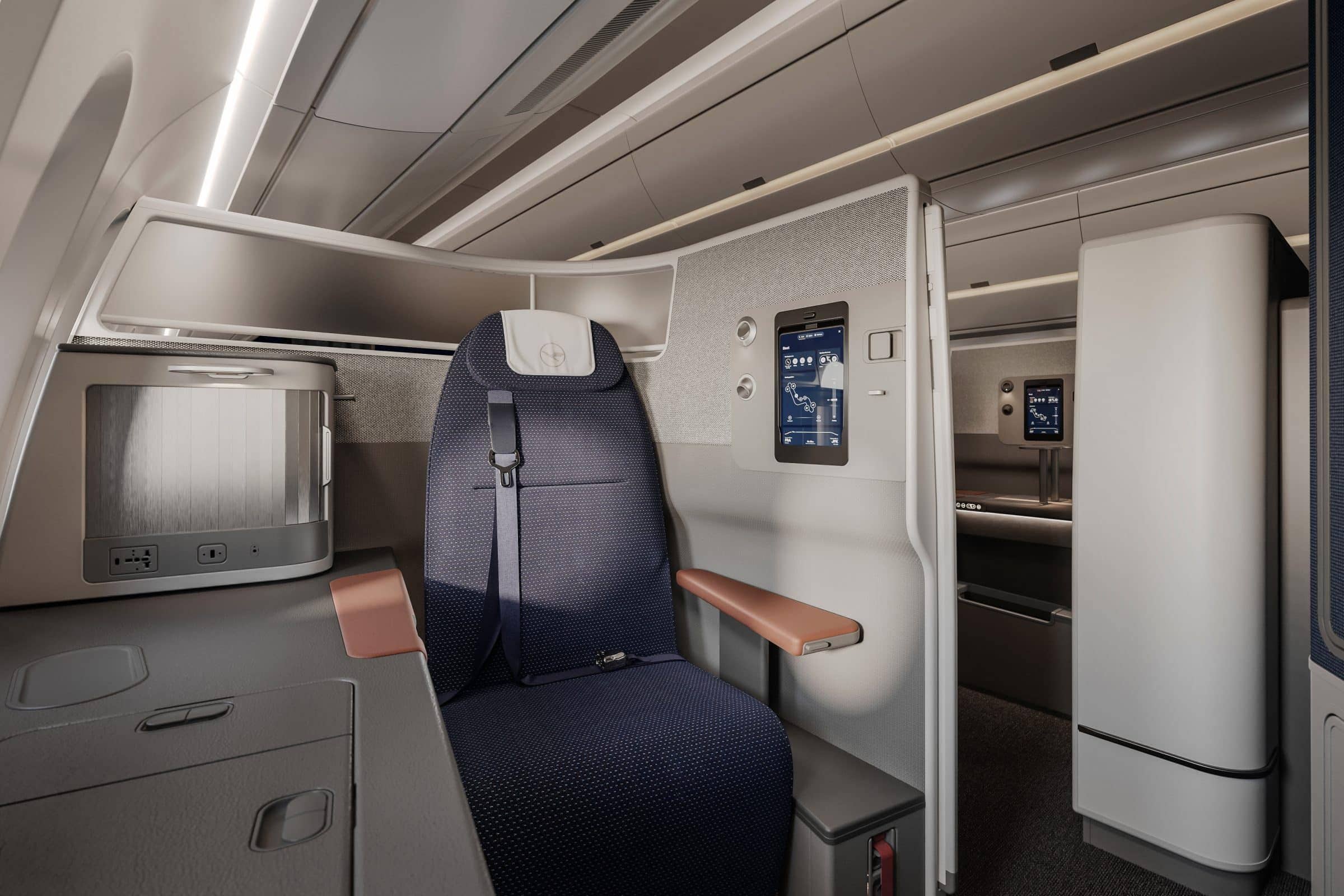
However, for short-haul and some medium-haul flights, most airlines in Europe use narrowbody aircraft with what’s known as “Euro business class.” This regional business class configuration is basically rows of economy seats with one of the adjacent seats blocked off, allowing carriers to easily add or reduce business class rows as needed.
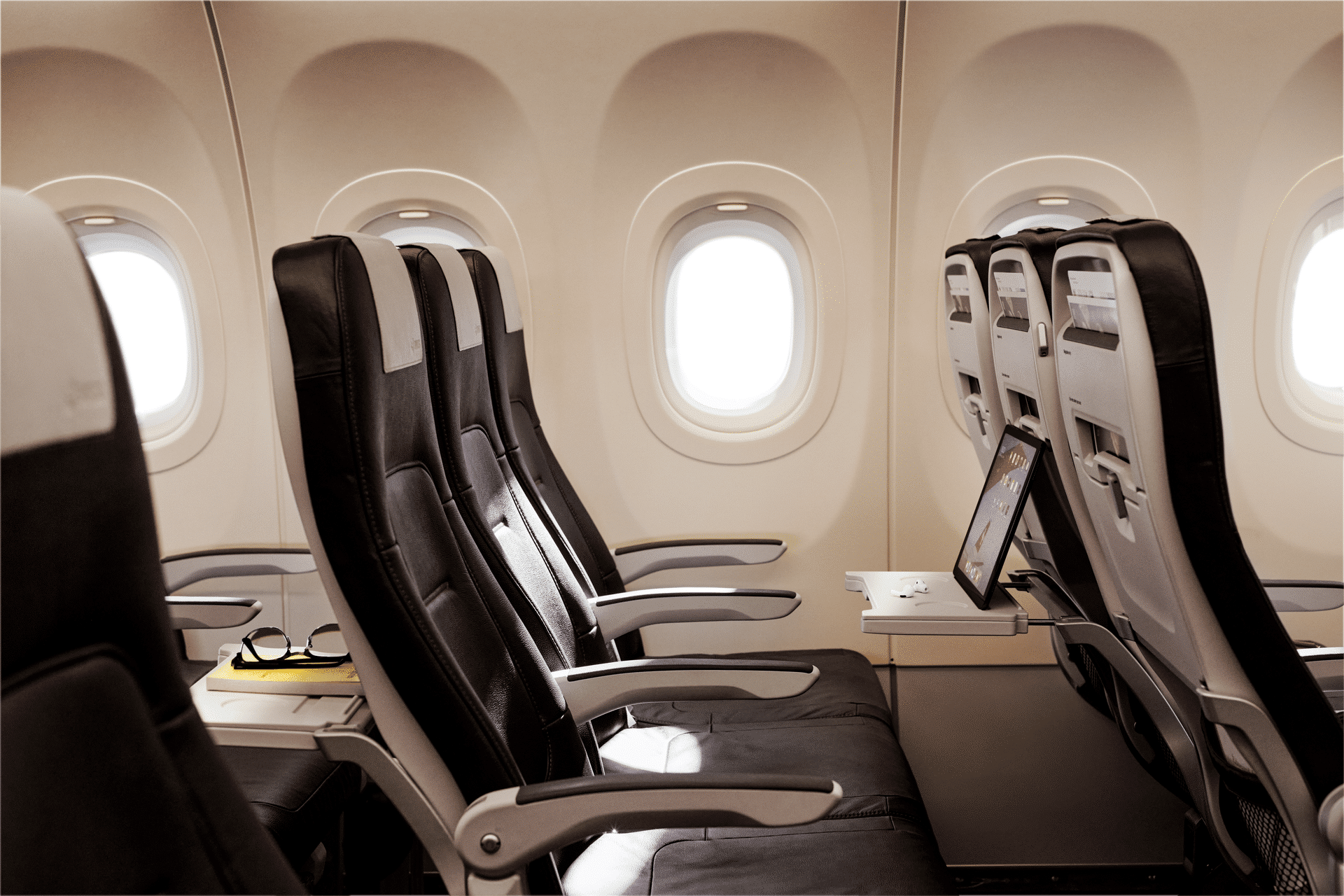
Swiss, Air France, and British Airways are only some of the top carriers in the region that offer a Euro business class product, while Turkish Airlines is one of the few exceptions that offers recliner seats – a more appropriate business class seat – on narrowbody planes.
Comparing Domestic and International Business Class
Most legacy airlines operate on a “hub and spoke” model, wherein they pool passengers into their hubs and fly them further afield. Airlines then try to make the business class experience consistent and seamless for their connecting passengers, including those who connect from domestic flights to international flights and vice versa.
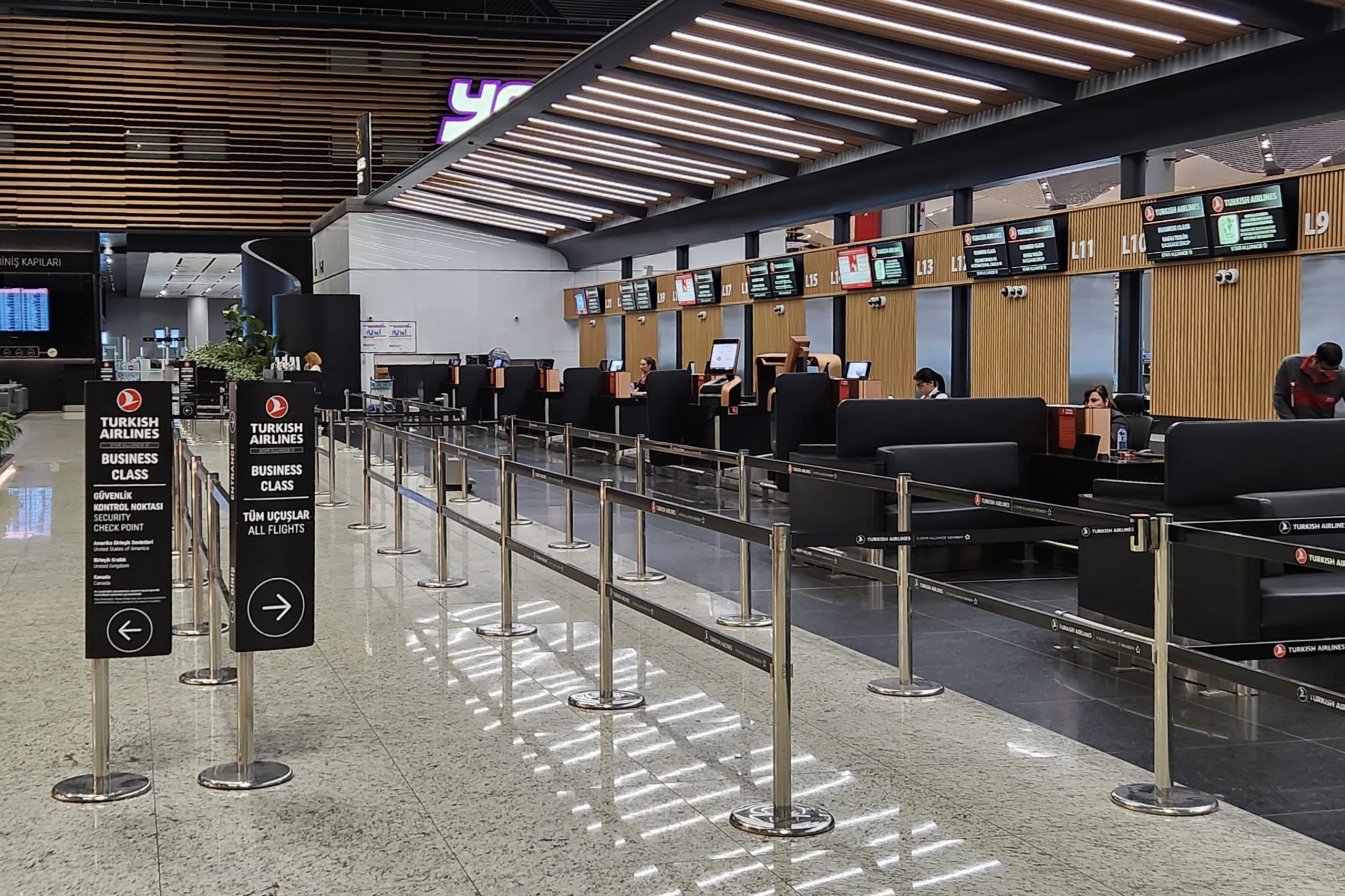
Still, despite these efforts, there are key differences between domestic and international business class owing to the following factors, among others:
- Flight duration: Domestic flights are generally shorter than international flights.
- Revenue/yield: International flight revenues are generally higher than those from domestic flights.
- Competition: Domestic flights have less competition, and usually, their competitors are no-frills, low-cost flights, so airlines aren’t as incentivized to compete.
Below, we’ve outlined some of the main differences between domestic and international business class.
Lounge Access
Simply put, domestic lounges are generally less impressive than international lounges. In many cases, they’re smaller due to lesser demand (except at hub airports), and the food and drink offerings aren’t as extensive as they are in international lounges.
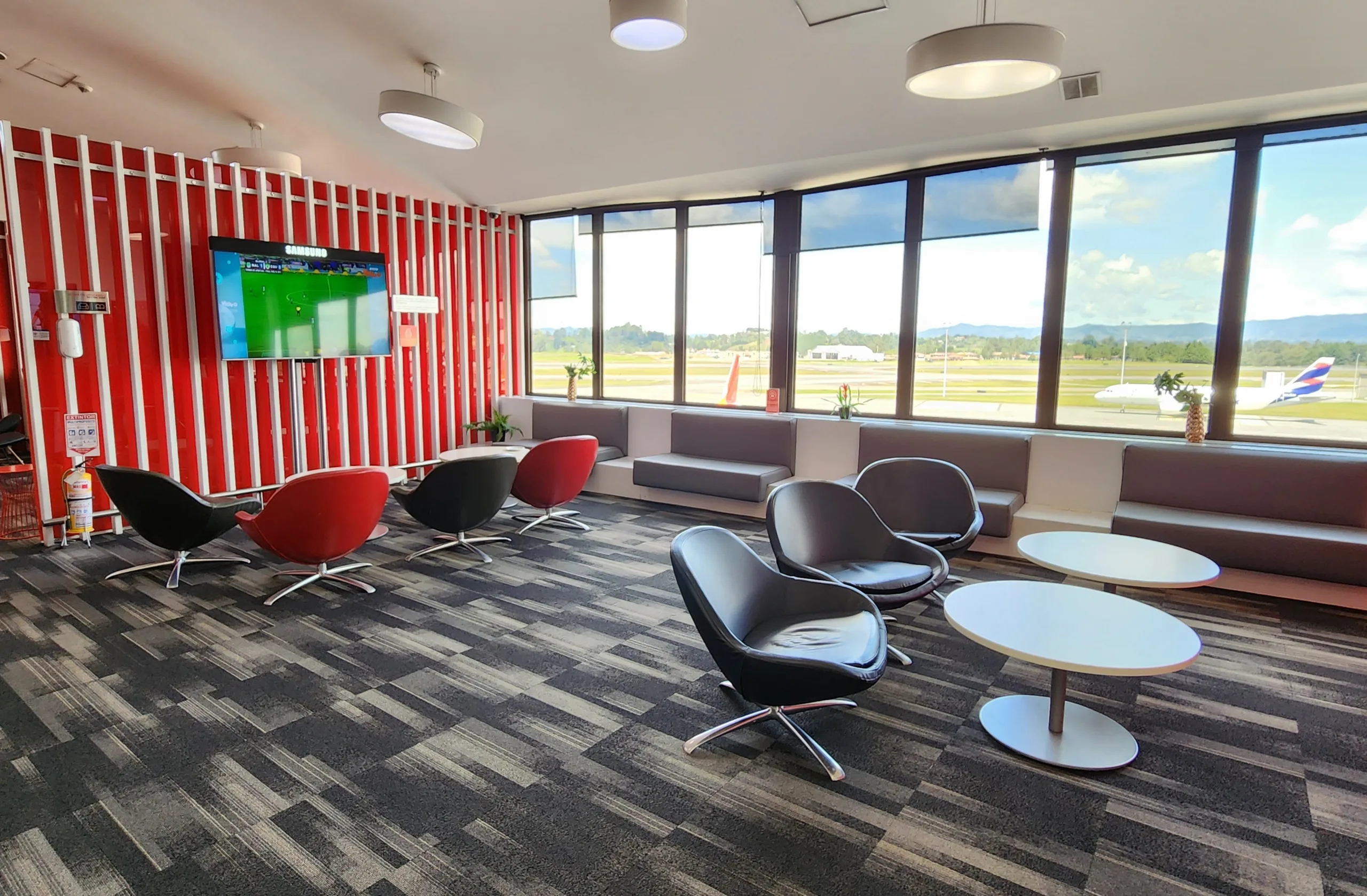
For example, United Club Lounges in the US, which mostly serve domestic passengers, offer light snacks and non-alcoholic drinks, and depending on the location, may include complimentary bar service. By contrast, United Polaris lounges, which are reserved mostly for passengers on long-haul international flights, have a bigger buffet available and a wider selection of beverages.
Seat
As discussed above, the type and style of seat that you get in business class depends mostly on the type of aircraft you’ll be flying on. Narrowbody aircraft typically feature recliner seats, while widebody planes usually come equipped with lie-flat or angled-flat seats.
Airlines more commonly schedule narrowbody planes on domestic flights, since they’re offered more frequently than international flights and thus benefit from having a number of smaller planes flying the route more often rather than a large plane flying less often. Plus, many domestic flights are too short to warrant a plane with lie-flat seats.
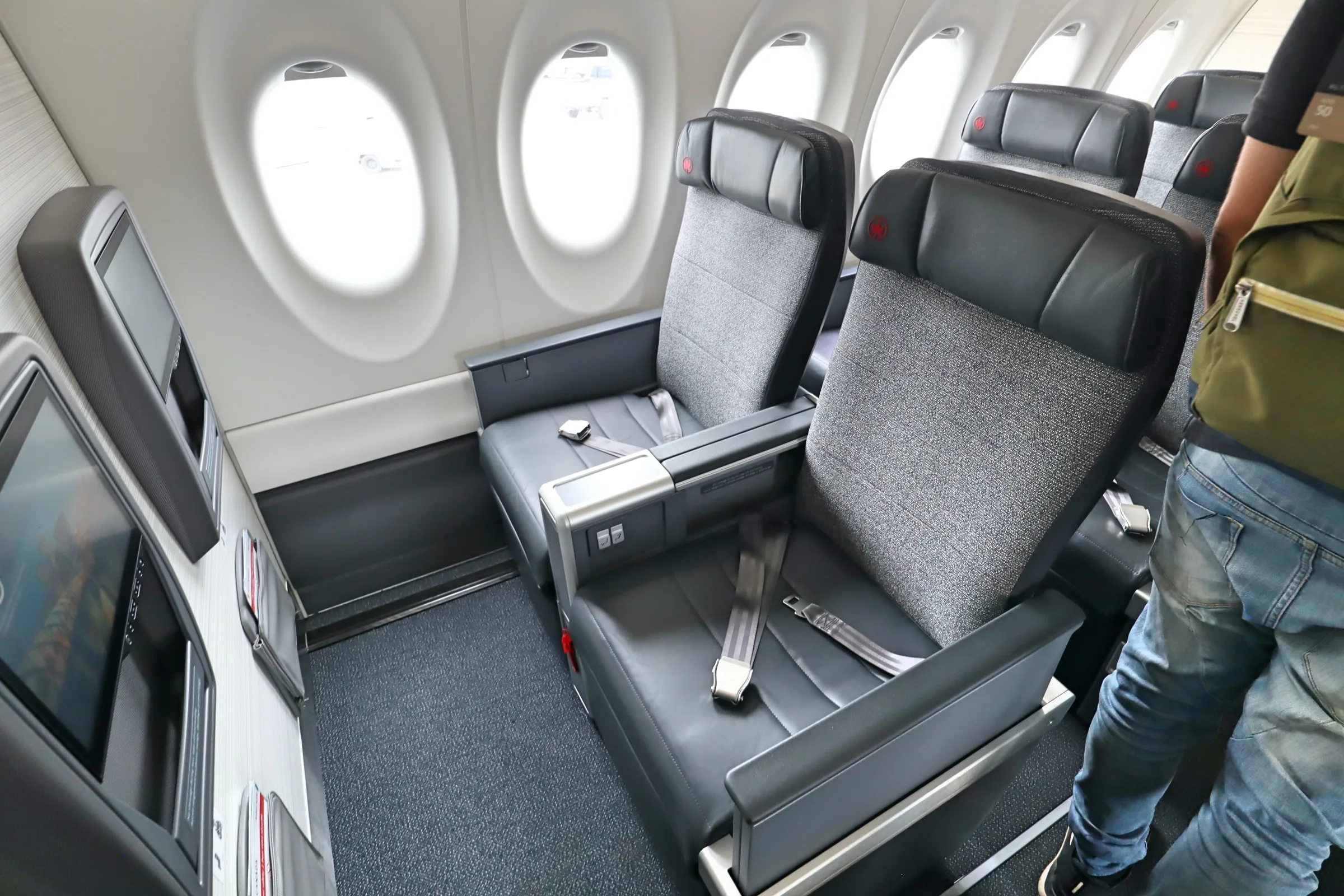
Therefore, if you’re flying domestically, you’re more likely flying on a narrowbody plane with recliner seats in business class, while if you’re flying internationally, especially a long-haul route, you’re more likely to end up on a widebody plane with lie-flat seats.
Food and Drink
Airlines come up with different menus for domestic and international flights, and the menus reflect the demographics of the passengers they serve.
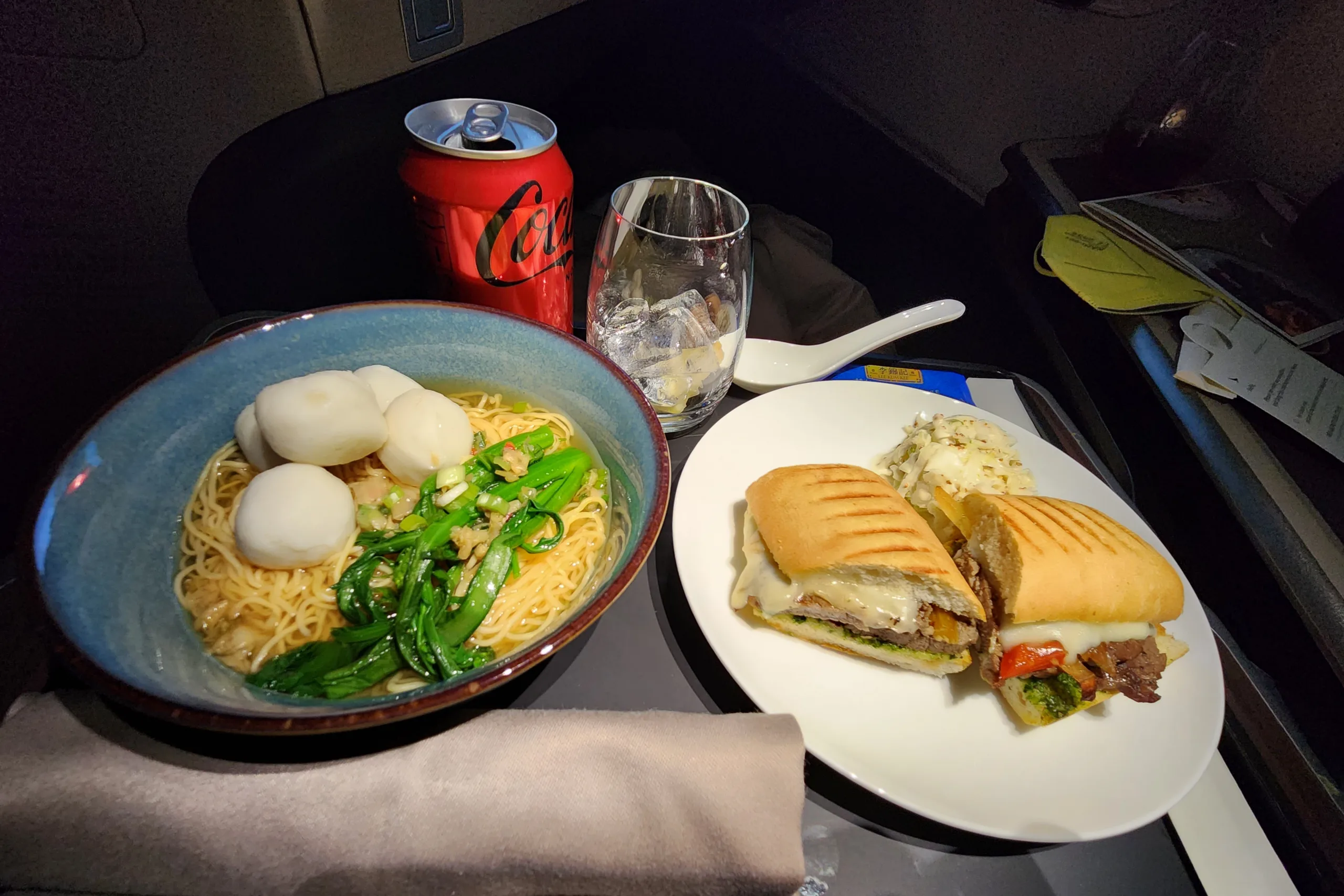
Domestic menus cater to a more local audience, while international menus must naturally cater to a more international audience. Naturally, you can expect a flight from Los Angeles to Tokyo to feature a Japanese option in addition to a Western option.
Moreover, airline catering is largely dependent on flight duration. Thus, domestic flights have more limited food and drink, since the crew have no time to serve elaborate meals.
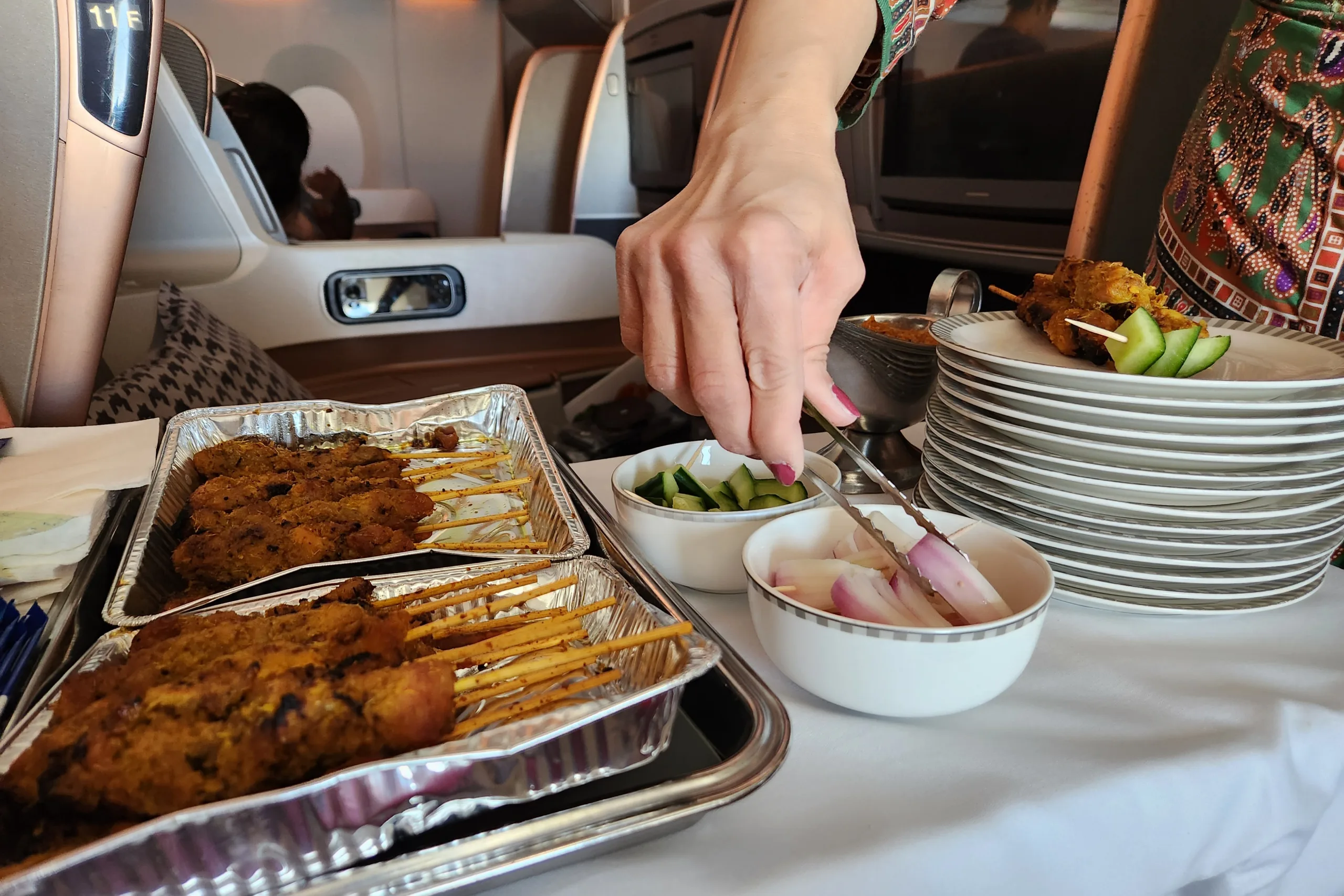
For instance, Turkish Airlines only serves canapés in business class on domestic flights, while American Airlines currently uses the following catering guidelines for domestic flights in First Class:
- For flights 500–899 miles: snack basket
- For flights over 900 miles: meal service
- For Flagship transcontinental and Hawaii: meals by Sam Choy (James Beard Award winner and creator of Pacific Rim Cuisine)
As you can see from this example, shorter domestic business class flights may only offer a small snack, while the longer the flight, the better the meal options become.
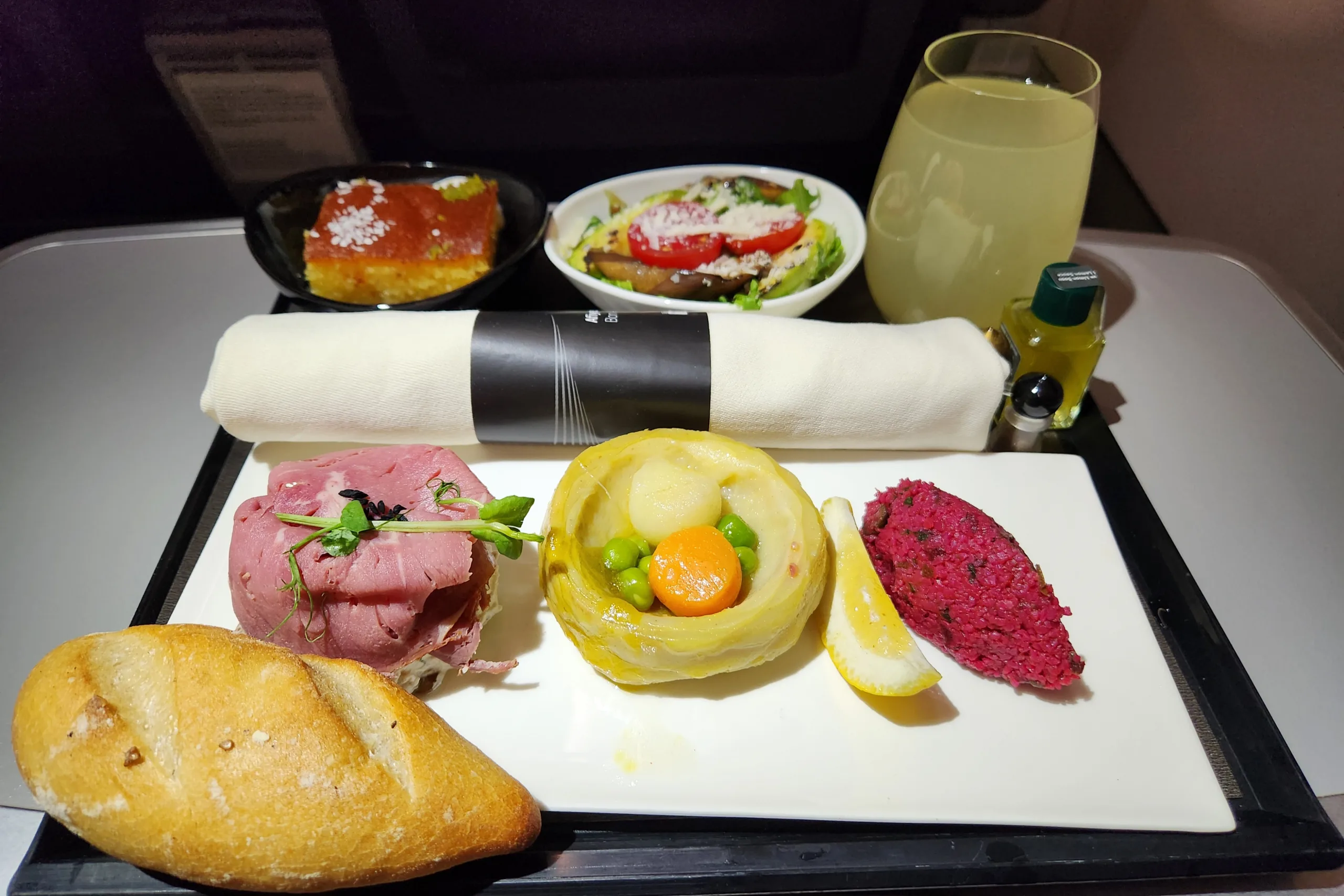
On international business class flights, in addition to offering a wider selection of meals, some airlines may even allow you to pre-order your meals to ensure you get the choice you want.
A good example of this is Singapore Airlines’ Book the Cook service, which lets you pre-select your meals at least 24 hours before your flight.
Further proving that airlines put lots of effort into international business class dining, we can look to China Airlines, which has been collaborating with Michelin-starred restaurants for its onboard dining.
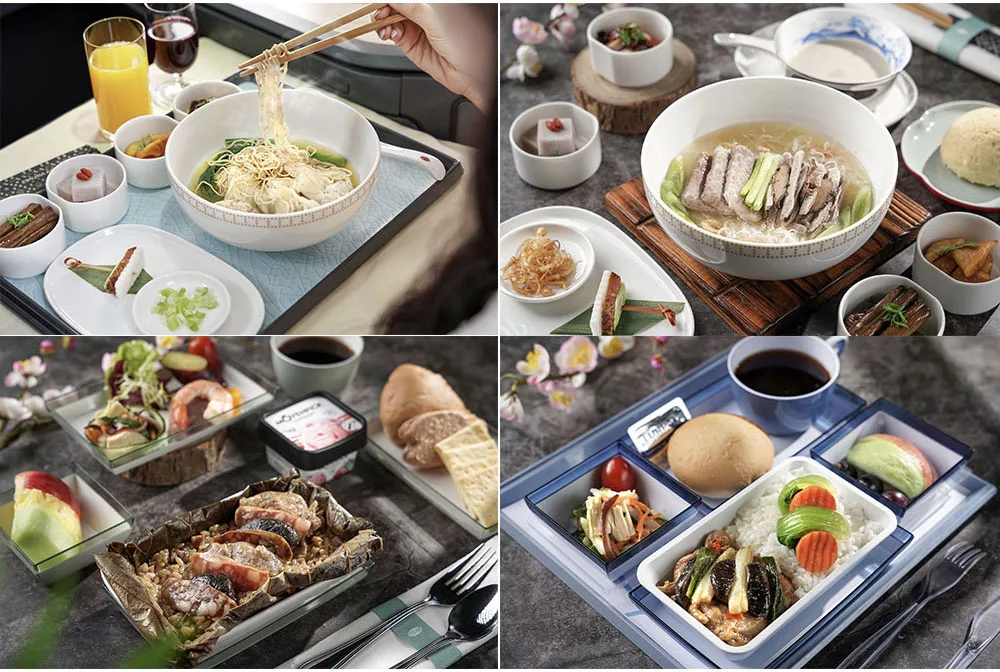
In terms of beverage selection in business class, domestic flights will generally offer a more limited variety than is available on international flights. Air Canada, in particular, serves only one red and one white wine on domestic business class (e.g., Toronto–Calgary), while on long-haul business class (e.g., Toronto–Frankfurt), it offers a more extensive wine list, including Champagne.
In-flight Amenities
Another difference you’ll notice between domestic and international business class is in terms of the in-flight amenities offered.
Many newer aircraft configured for shorter domestic flights don’t feature entertainment screens on the seat back anymore, even in business class. Instead, you’ll either be lent tablets or asked to download the airline’s app to access entertainment on your device.
In contrast, planes destined for long-haul flying are always equipped with seat-back entertainment screens, and airlines like Delta, Emirates, and Air Canada compete in offering the best entertainment content.
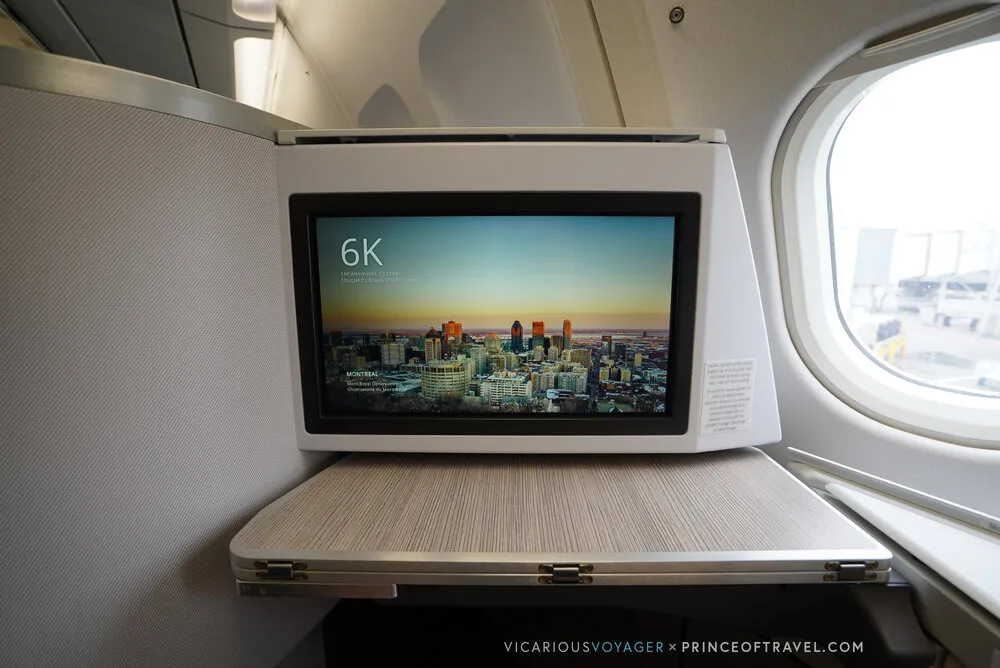
Speaking of entertainment, another, albeit small, difference between domestic and international business class is the quality of headphones you’ll be lent. For instance, Delta Air Lines distributes earbuds in domestic First Class and provides noise-canceling headphones with its Delta One long-haul international product.
Amenity kits are likewise typically only offered for international business class flights, especially longer ones. ANA, for example, only provides amenity kits on flights between Japan and North America, Europe, and Oceania.

Airlines make these amenity kits a highlight of their international business class product, collaborating with luxury fashion houses or sustainable brands. Qatar Airways has collaborated with iconic French perfumer Diptyque, while Delta hands out artisan-made pouches from Mexican apparel brand Someone Somewhere.
When Should You Book Domestic or International Business Class?
To put things simply, when using miles and points, you should always consider how much you’re paying relative to what you’re receiving.

Comparing cash fares to the cost in miles or points is one thing, but it’s also important to consider the benefits you’re getting from the flight.
As discussed above, domestic flights are generally shorter, so you won’t be getting as many amenities during your trip, and the food and drink on offer won’t be particularly elaborate.
The same thinking goes for seating. Shorter domestic flights are usually on narrowbody aircraft, so in business class, you’ll get a recliner seat, or in Europe, an economy seat with a blocked adjacent seat.
With a long-haul flight, meanwhile, you’ll get to enjoy the business class experience longer on a lie-flat bed, allowing you to get a more comfortable sleep.
Given these realities, it might not be worth it to pay 27,000–37,000 Aeroplan points (which we’d value at $567–777 CAD) for a three-hour flight in business class from Toronto to Saskatoon on Air Canada Rouge, when a cash fare in economy on this same flight can be had for more or less $100 at certain times of the year.

Comparatively, a situation where domestic business class may make a lot of sense is if you’re adding a domestic leg to a more complex itinerary, as this might not cost you anything additional.
For instance, when crafting a complex Aeroplan itinerary in business class, you can potentially add flight segments without breaching the next distance band on Aeroplan’s Flight Reward Chart.

In this way, you could potentially add a domestic business class, for example, Tokyo–Osaka on ANA, to a multi-segment trip from Asia without increasing the cost in Aeroplan points.
When it comes to whether it’s worth booking business class on an international flight, the same considerations apply – basically, if the flight is short, it might not be worth it.
An excellent example of this premise in action would be flights within Western Europe, which are usually a short hop lasting less than two hours.
With a duration of 1 hour 45 minutes, a flight from Paris to Barcelona on Air France costs 15,000 Flying Blue miles. We’d peg a value of $300 (CAD) to those miles, and while that doesn’t sound much, you should keep in mind that an economy flight on the same route can cost as little as $24 (CAD) on a low-cost carrier or about $112 (CAD) with Air France.

Furthermore, since these flights deploy the Euro business class seating configuration, your business class experience will be limited to an economy seat with a blocked adjacent seat and a plated snack tray for the short flight.
Since Air France KLM Flying Blue miles are harder to acquire than Aeroplan points in Canada, saving these miles for a more valuable redemption is worth considering.
You can, for instance, integrate that Paris–Barcelona leg into a transatlantic redemption under Flying Blue’s North America–Europe harmonized redemption scheme, which lets you redeem a business class seat between any Air France or KLM destination in North America and Europe or Northern Africa for only 50,000 miles.
Plus, you can even add Paris or Amsterdam as a stopover by calling in to redeem.
Conclusion
As broken down above, domestic business class and international business class do have their differences.
Domestic business class offers a solid upgrade from economy but usually features fewer amenities compared to international business class. The differences stem from shorter flight durations, generally lower revenue on domestic routes, and less competition from other airlines.
Conversely, international business class benefits from major global competition, resulting in superior features, such as lie-flat seats, extensive meal options, and deluxe inflight amenities.
That said, when using miles and points, you should, as always, consider how much you’re paying relative to what you’re receiving. While international long-haul flights in business class are a no-brainer, domestic flights, given their short duration, might not make sense depending on your priorities.
Hopefully this article has helped you gain a better understanding of the differences between domestic business class and international business class, and we hope you now feel more equipped to assess when to book and when not to.













